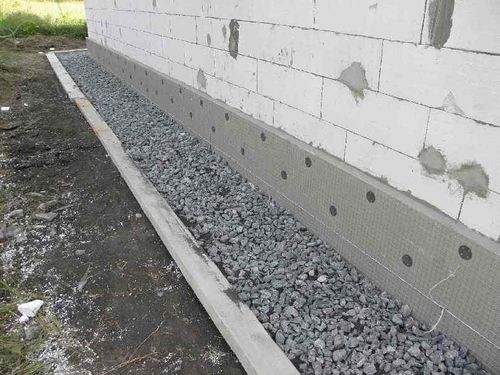The cladding of the lower part of the building is necessary to protect against negative environmental influences and to give the walls a decorative appeal. A popular finish is basement tiles. The material has mechanical strength, frost resistance and low water absorption. Among the variety of tile assortment, it is easy to choose a product that matches the architectural appearance of the facade.
Varieties of basement tiles
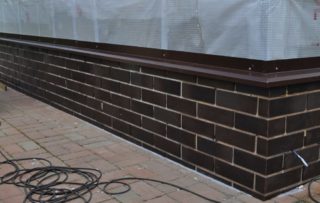
The materials for external finishing are subject to increased requirements in terms of strength, resistance to temperature extremes and moisture. Plinth tiles for the foundation differ in characteristics and raw materials for production. The highest quality options include:
Polymer sand
The main components of composite tiles are sand, polymers, dyes and modifiers. Products are molded under high pressure and temperature. Externally, they imitate natural stone and are presented in various design options. The coloring pigment does not fade over the years. The material is lighter than other types of finishes, resistant to frost, moisture, abrasion. Installation is carried out with glue or self-tapping screws.
Clinker
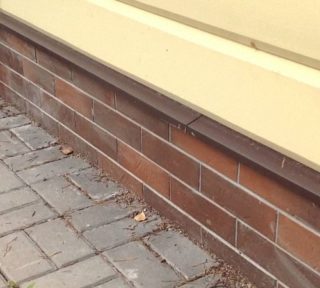
Thanks to their attractive design and long service life, clinker tiles for plinths are widely used in construction. It is made from high temperature processed clay. The clinker finish is environmentally friendly and easy to clean. The shape and size of the product resembles bricks. Their outer side is smooth and glossy or embossed. After the installation is completed, the finish imitates brickwork. When choosing a material, the method of its production is taken into account:
- hand molding;
- machine pressing.
In the second case, the products are manufactured in the factory and have the required strength.
The downside of clinker is its significant weight. The trim is attached to a sturdy frame.
Hyperpressed
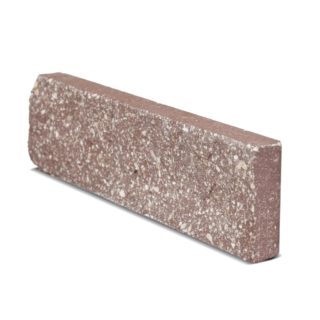
Hyper-pressing technology makes the material resistant to weather conditions, aggressive substances and freezing. In the manufacture of cement, limestone or dolomite, a small amount of water is used. In terms of characteristics, the resulting products are similar to clinker, but weigh much less. The advantages of tiles include durability, affordable cost and ease of installation.
Resin tiles
Artificial material based on various resins is flexible and can be easily mounted on a plinth of any architectural shape. The outer part of the products reproduces the pattern of natural stone. The tiles are lightweight, thin and resilient. It is resistant to moisture, can be easily cut with a construction knife or scissors. Flexible cladding is sold in rolls or cut. To bend the plate, it is preheated with a hair dryer.
Natural and artificial stone
Natural material is rarely installed when lining the foundation. It is expensive, difficult to maintain and handle, and creates a high load on the substrate. Porcelain stoneware slabs are not inferior to natural counterparts in beauty and durability. They are not afraid of moisture, sun, mechanical stress.When buying, they pay attention to the special marking indicating the frost resistance of the products.
Features and Benefits
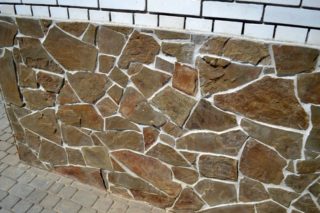
The base is located in close proximity to the ground, therefore it often comes into contact with water. The cladding will become an additional barrier preventing moisture from entering the building. Another plus of the exterior finish is protection from the cold. An additional layer of building material will reduce heat loss.
To cope with their functions, base / plinth tiles must meet several criteria:
- thickness 15-20 mm;
- resistance to moisture, frost, chemicals;
- mechanical strength;
- attractive design;
- increased density.
The variety of produced basement tiles allows you to choose the best option in terms of design and performance. You can find products that imitate brickwork or natural stone in any color scheme.
Material advantages:
- The cladding emphasizes the individual architectural appearance of the house.
- The negative impact of weather conditions on the foundation of the building is reduced.
- The base / plinth tiles reduce heat loss.
- After installation, no maintenance is required. If necessary, the damaged element can be replaced.
- Convenient tile format and sizes allow you to do your own cladding.
- The service life of the finish is 30-50 years, depending on the selected material.
Of the disadvantages of the facing option, a high weight is noted, which creates an additional load on the foundation. If the base of the house is weak, then lightweight products based on polymers or resins are chosen.
Plinth trim sequence
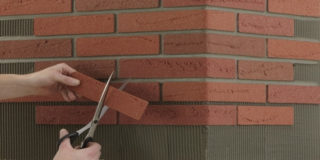
The tile is attached to the base in two ways:
- Wet - on an adhesive base. This method is considered a classic, its plus in the budgetary cost. The disadvantage is high labor intensity.
- Dry - on the mounted frame using self-tapping screws. The advantages of this method are speed and the ability to lay insulation between the wall and the tile. Minus - additional costs for frame guides.
The technology for laying tiles for the basement of the house depends on the chosen method, but before starting finishing work, it is necessary to prepare the base. If the house has just been built, it is enough to treat the wall with an antiseptic compound and a primer. The impregnation will prevent the development of mold, improve the adhesion with the adhesive solution. Revision is necessary on old grounds. We'll have to remove the finish, patch up the existing cracks.
Laying on glue
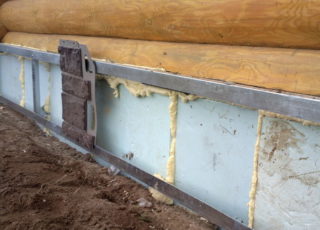
After the preparation of the base, at the request of the owner, a layer of thermal insulation is laid. Reinforcement is performed before installing the tiles. A layer of mortar is applied to the base, into which a metal mesh is recessed. After drying, marking is done on the surface. The applied lines will help to lay the tiles efficiently. The adhesive composition must be frost-resistant; Ceresit dry mixes are recommended. The mortar is applied to the base and back of the tile. This requires a notched trowel.
The glue hardens within 15-20 minutes during this time, you can correct the installation errors. To give the cladding decorative effect and protect the seams from moisture, grout is performed. Coloring pigments are added to the solution for colored tiles. It is better to apply the composition with a rubber spatula. The jointing is done using a cable of a suitable cross-section. It is pressed into the solution between the tiles, then removed. Residues of the solution from the surface of the finishing material are removed with a brush.
Frame mounting
Frame guides can be metal or wooden. The timber is pre-impregnated with an antiseptic. With this method of finishing, complex leveling of the base is not needed, but the basement must be treated with a hydrophobizing compound. The tile is fixed with self-tapping screws or clamps.When decorating the corners, the elements are trimmed with a grinder.
Work recommendations
It is difficult for a person who is laying tiles for the first time to take into account all the nuances. Finishing specialists give their recommendations:
- To make the cladding even along the entire length of the perimeter of the house, the first row is laid on a metal profile. The guide is set horizontally, it will serve as a beacon for aligning the tiles.
- When choosing an adhesive solution, carefully read the annotations. The composition should be designed for outdoor use and basement tiles. An unsuitable grout may not hold a heavy finish.
- The reliability of fixing the finish with a wet method is increased due to the reinforcement with a metal mesh.
The final stage of finishing the basement is the ebb device over the finishing material. The installation of special elements will protect the decorative cladding from being washed out by precipitation.








